
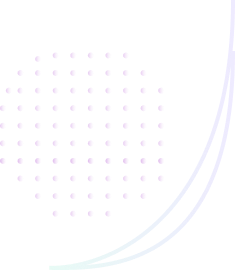



Network Optimization
- Determine the best supply chain network configuration using the leading analytical solver, IBM ILOG CPLEX®.
- Set constraints to find a feasible solution.
- Conduct supply chain master planning by period to optimize where and how much you have to produce, store, and ship.
- Convert results of analytical optimization into a dynamic simulation model for deeper analysis and to gain understanding of the internal supply chain dynamics.
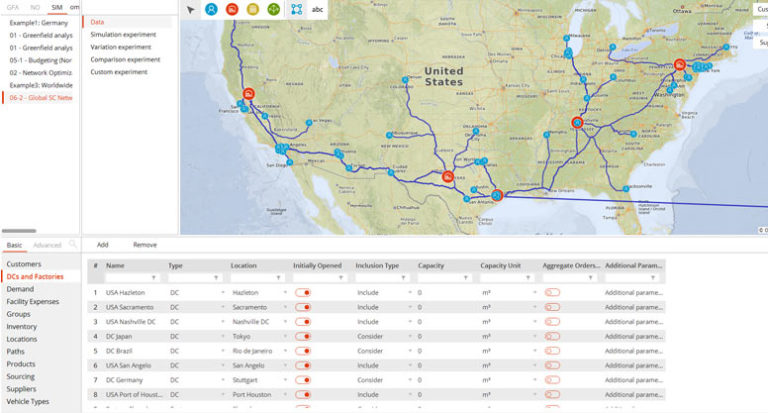









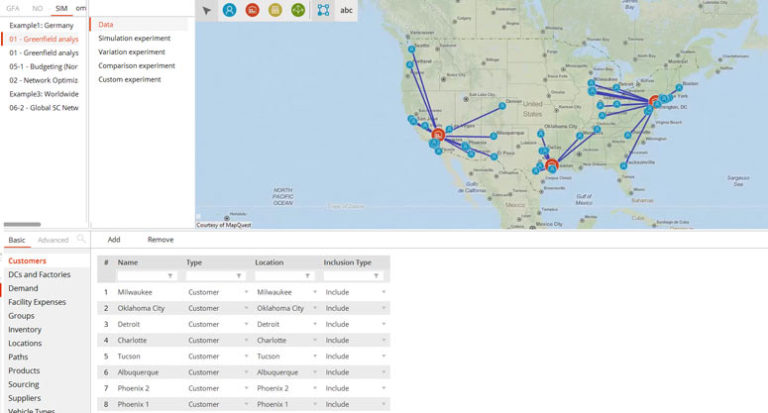

Greenfield Analysis
- Find the number and locations for supply chain facilities with minimum input data – customer locations, demand, and products.
- Perform multi-echelon Greenfield analysis if your supply chain has several tiers.
- Carry out precise analysis of your supply chain by converting GFA results into a network optimization or dynamic simulation model.





- Address problems that cannot be solved with analytical optimization by creating detailed dynamic simulations of your supply chain.
- Analyze time dependent factors, random events, actual system behavior, and dynamic interactions between elements of your supply chain.
- Simulate processes inside four walls: manufacturing processes, resources, scheduling, DC processes, layouts, and costs.
- See how your metrics change over time. For example, examine what the values of these metrics were on the 25th day of the simulated period: inventory/service levels, orders in progress, used capacities, utilization rates, lead times, costs/revenue, bullwhip effect, and more.
- Consider complex logic in network level policies: replenishment, sourcing, manufacturing, and transportation. Take into account resource utilization rates (fleet, people, equipment).
- With network optimization, you get the plan for your supply chain. With dynamic simulation, you find out how to implement the plan.
Dynamic Simulation
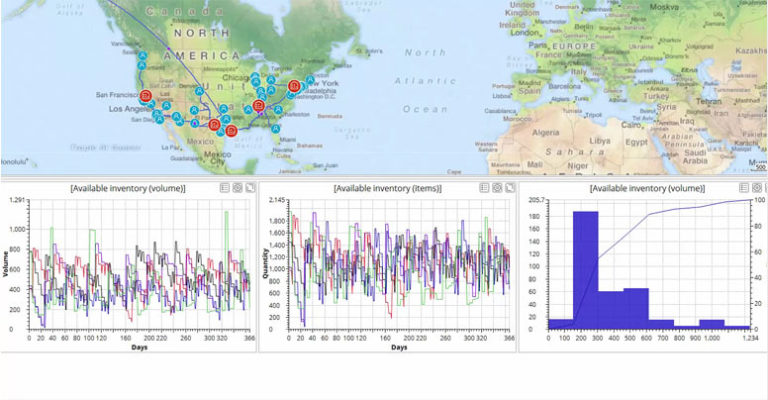









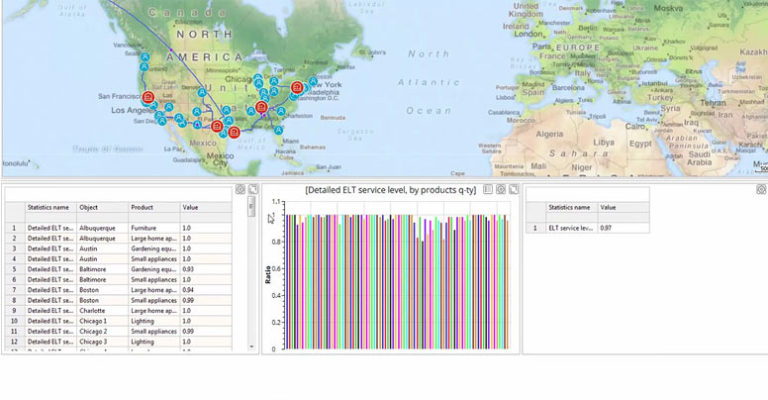

Flexible Statistics
- Measure everything you need in your supply chain model: costs, revenue, inventory dynamics, service levels, bullwhip effect, capacity, utilization, incoming/outgoing orders, and products.
- If a statistic you want to look at is missing in the standard list, you can add it through the ALX extension mechanism.
- Examine how the statistics change over time when the model is running to see how the supply chain behaved in each moment of the simulated time.
- With a powerful dashboard, you are never limited in the way to present the desired information.





Diversity of Experiments
There are a variety of experiments you can work with, depending on the problem you need to solve:
- Network optimization
- Greenfield analysis
- Simple simulation run
- Comparison
- Parameters variation
- Risk analysis
- Monte Carlo
In addition, you can design and conduct your own custom experiments. For example, you can use your own solver, run variation experiments to find the best parameters of reordering policy for different scenarios, or conduct simulation based optimization.
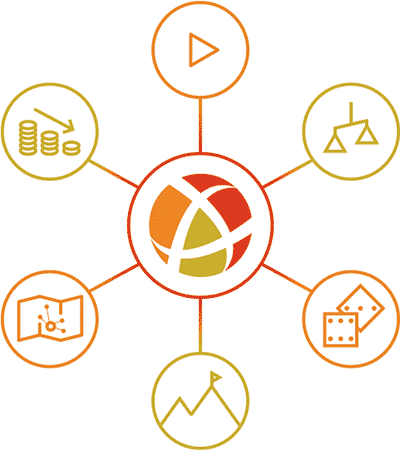









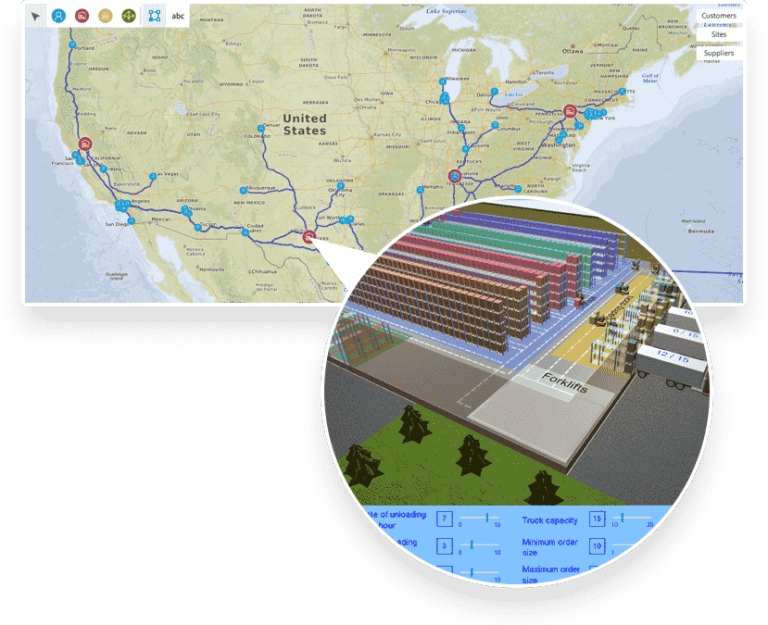

Extension with Anylogic
- Any component of an anyLogistix dynamic simulation model can be changed with AnyLogic® Professional, the leading simulation software tool.
- Customize network objects by modeling them inside four walls: warehouses, distribution centers, factories, customers/market. In addition, you can edit ordering, inventory, sourcing, and transportation policies.
- Customize anyLogistix tables using AnyLogic, for example, you can change the way your transportation cost is calculated.





